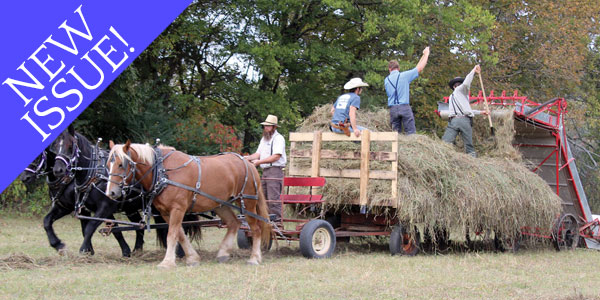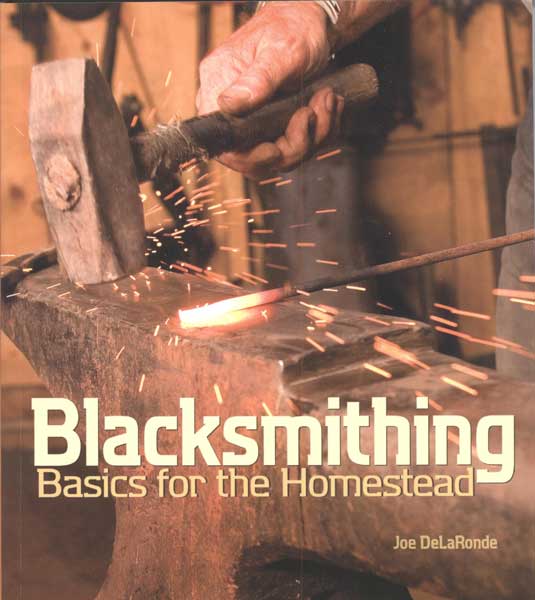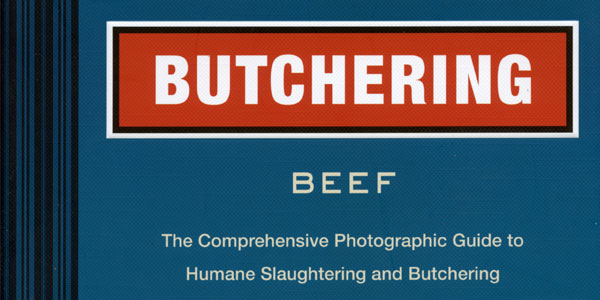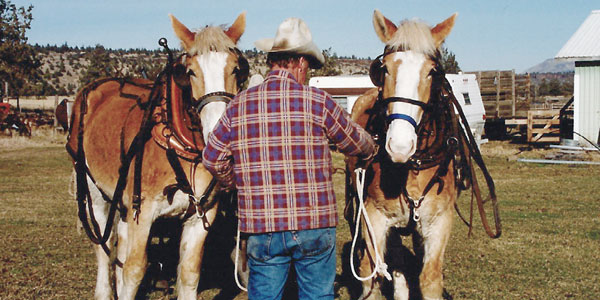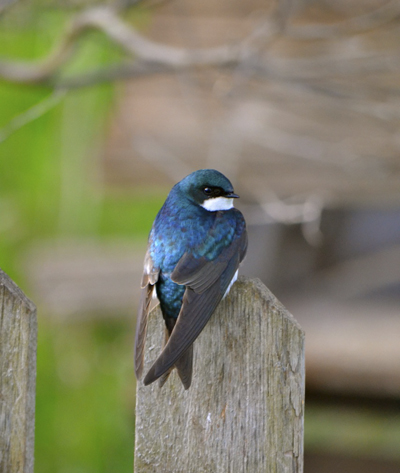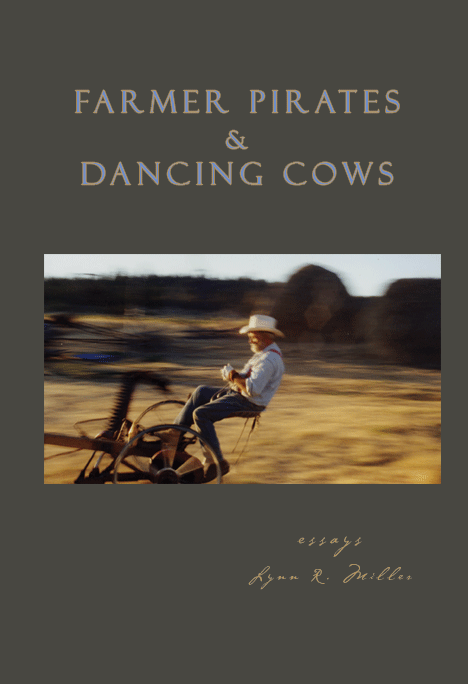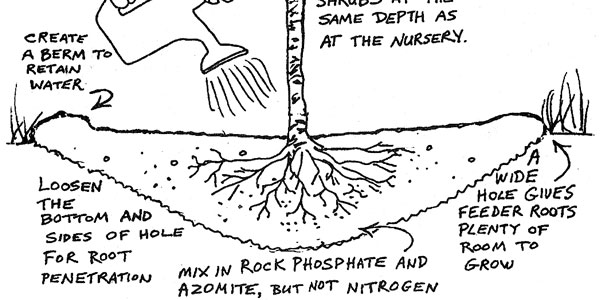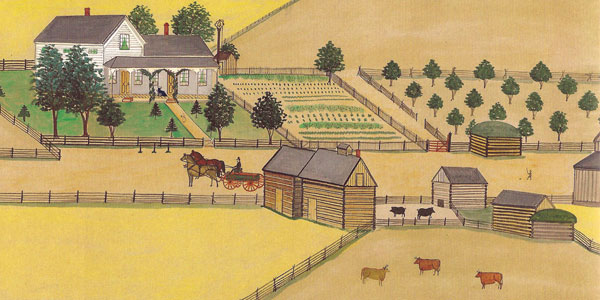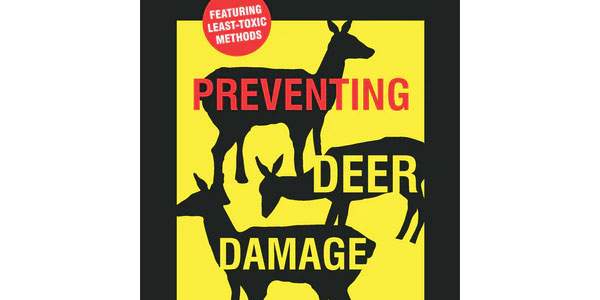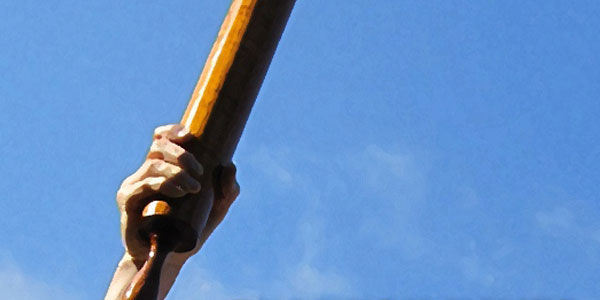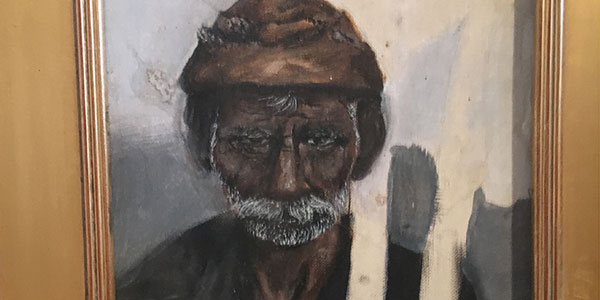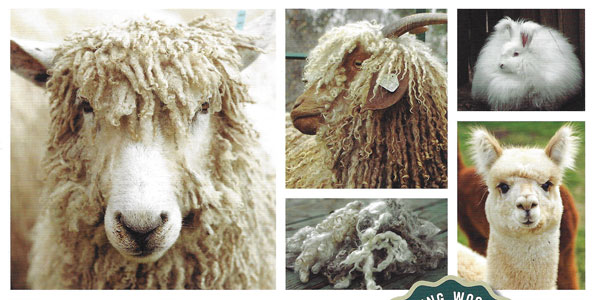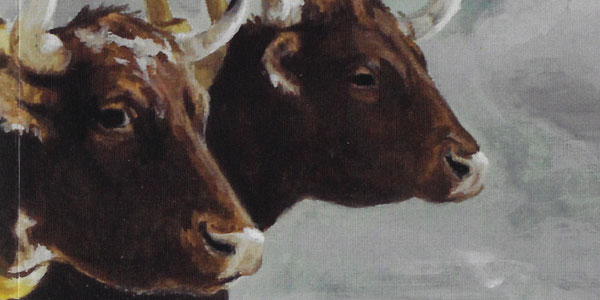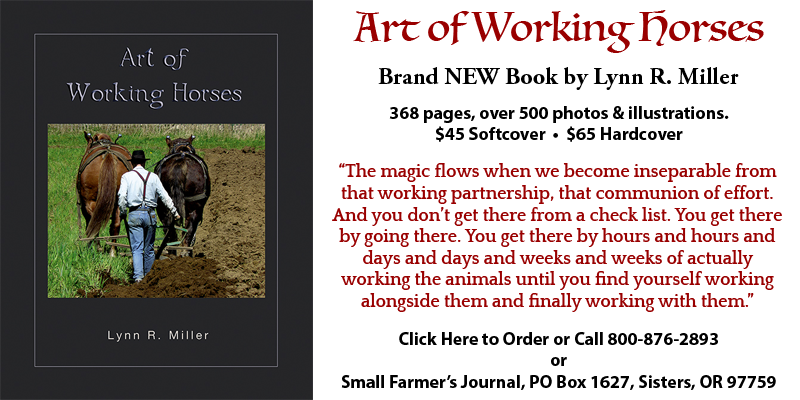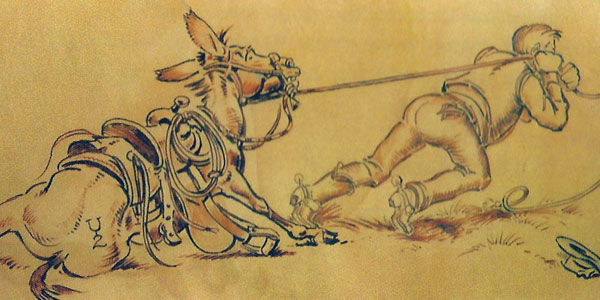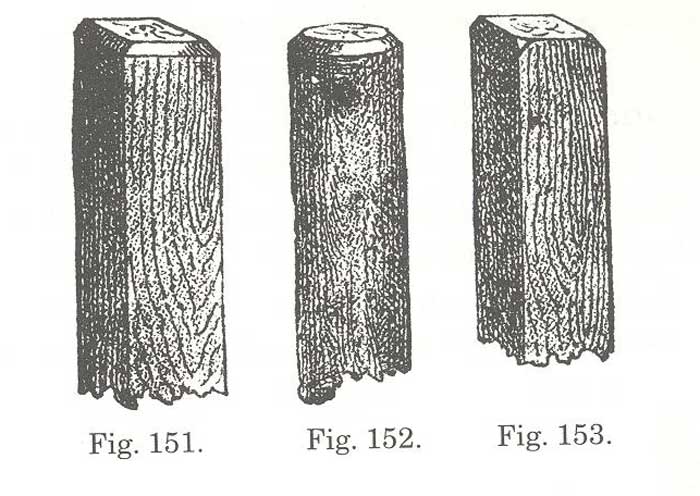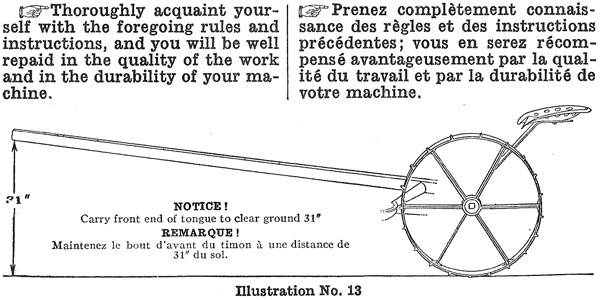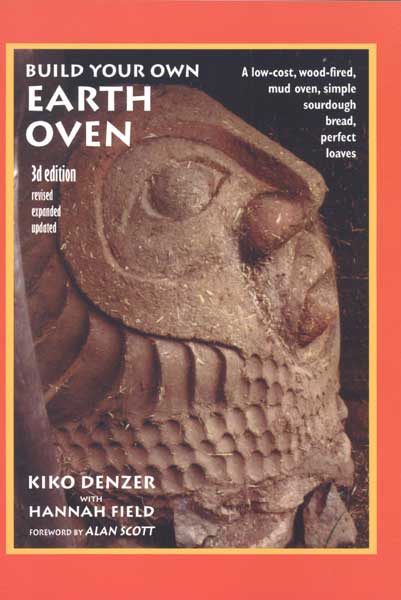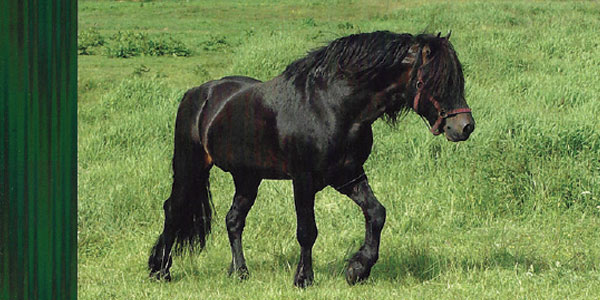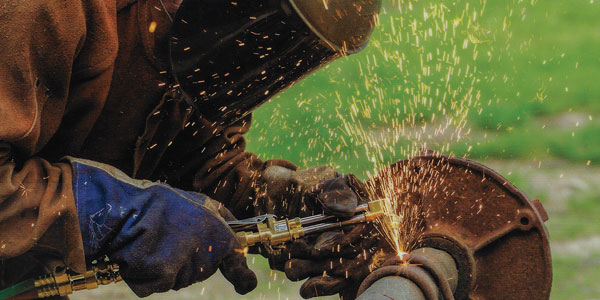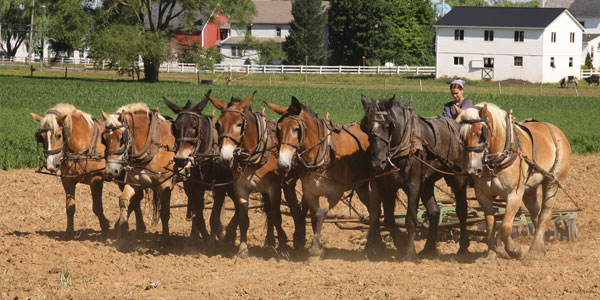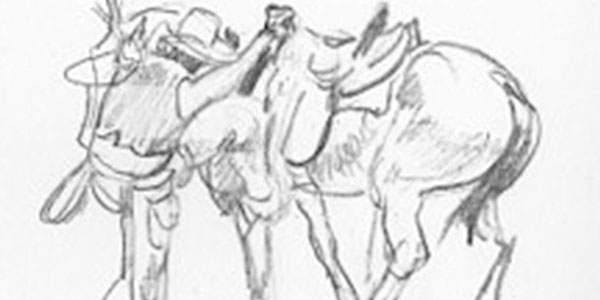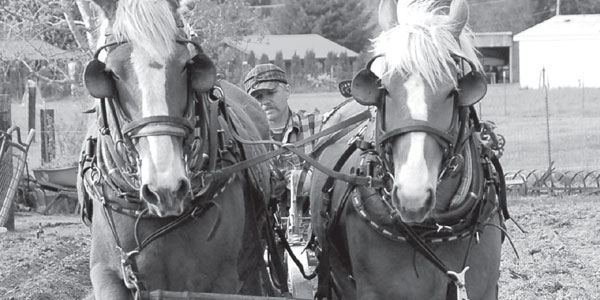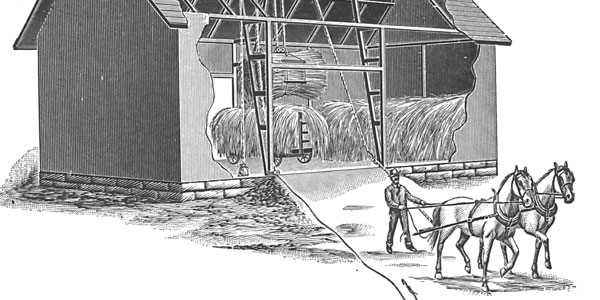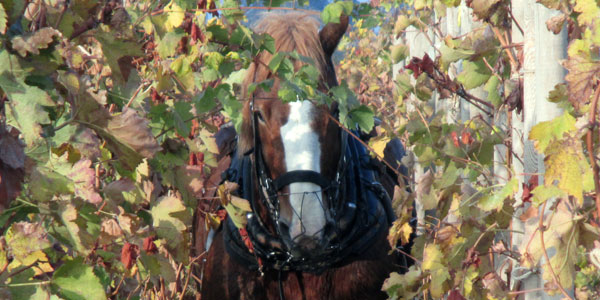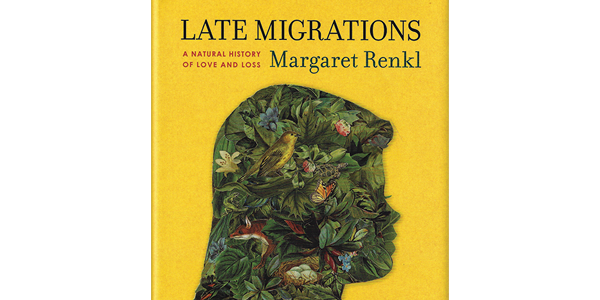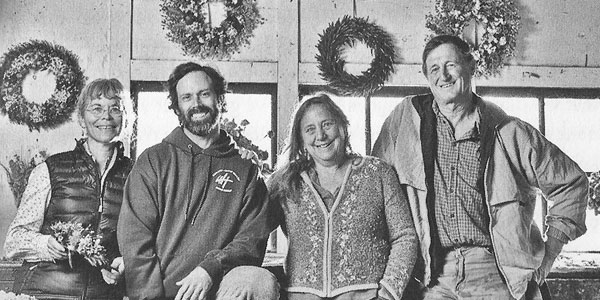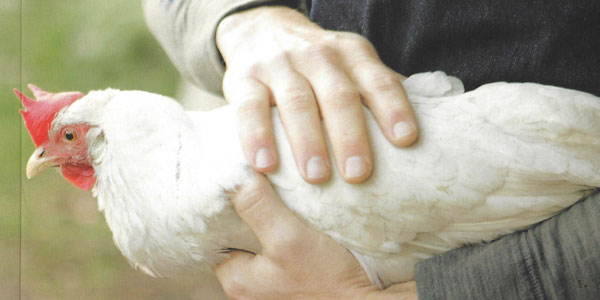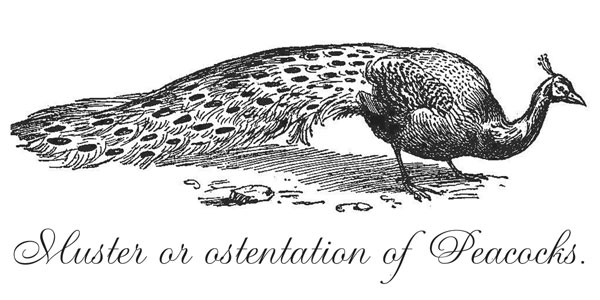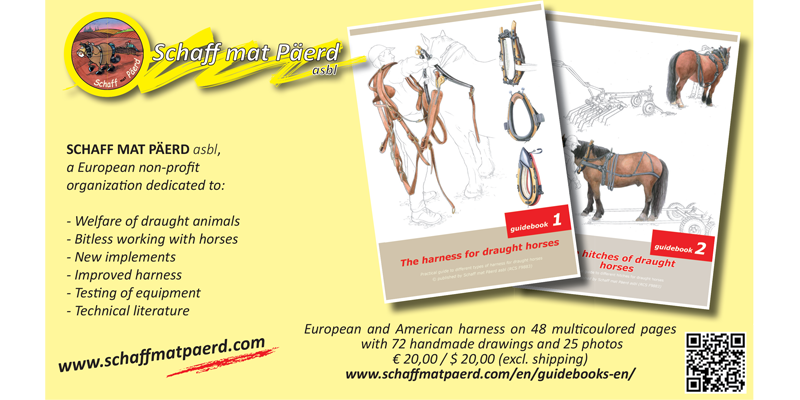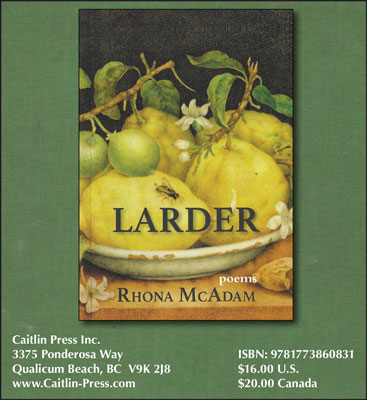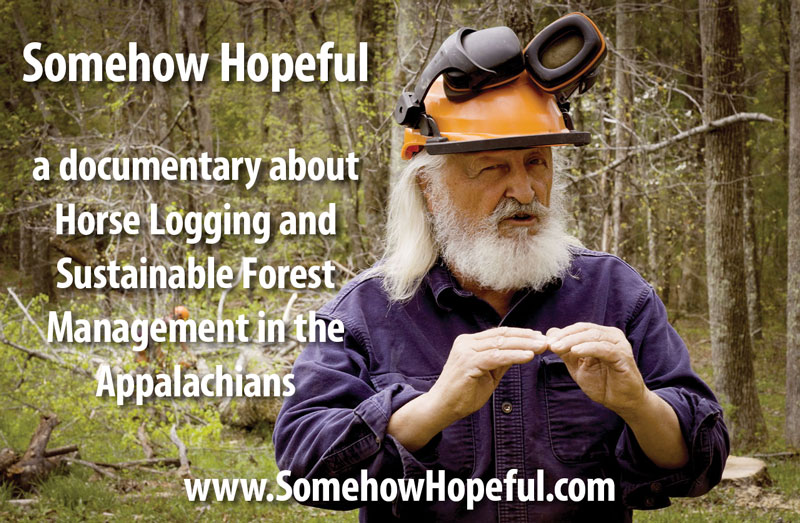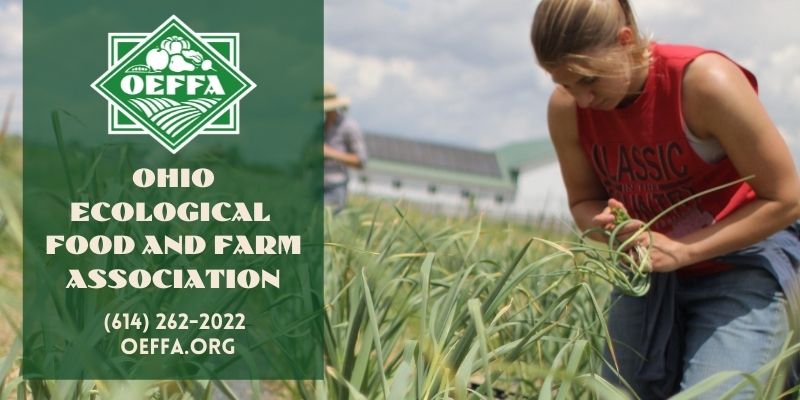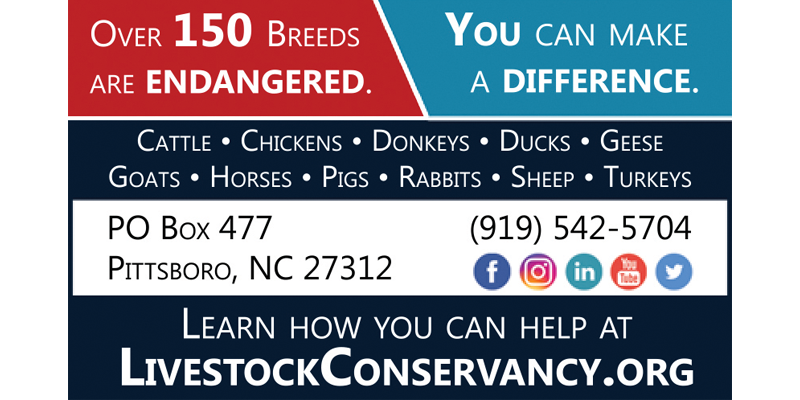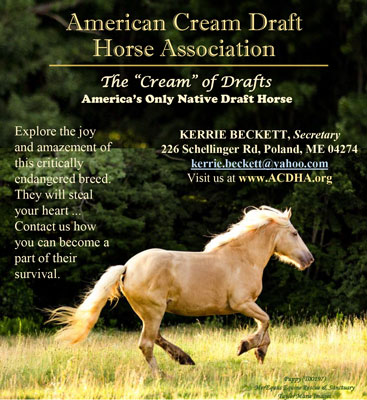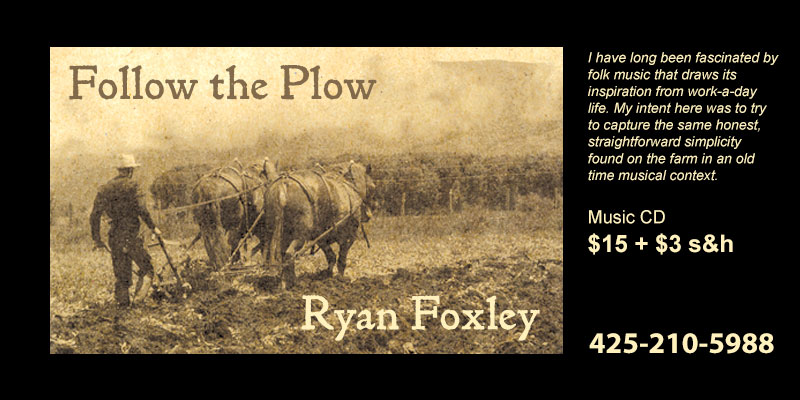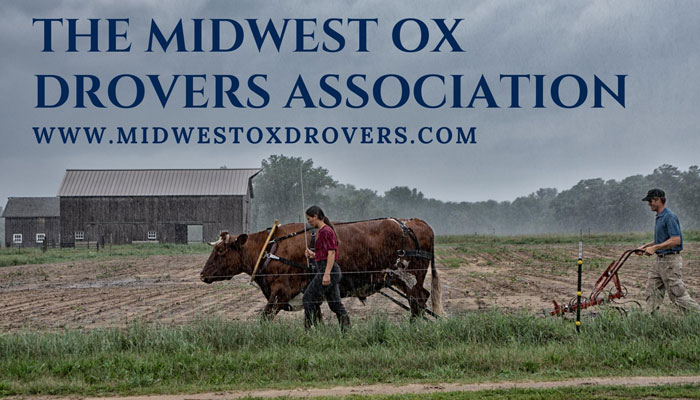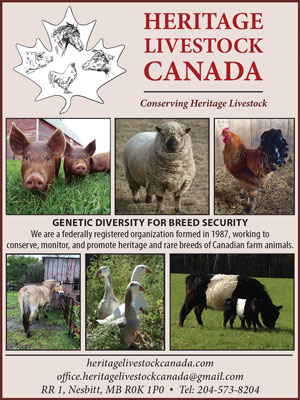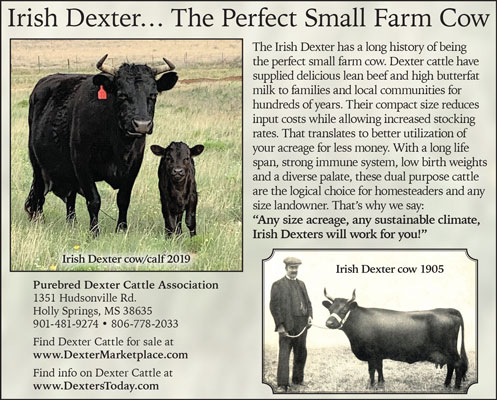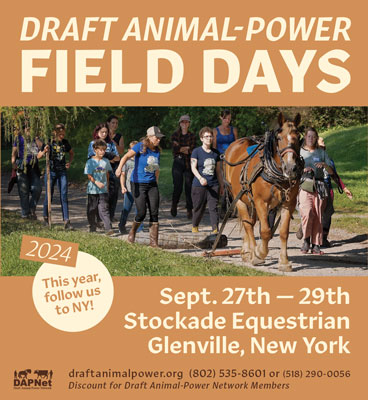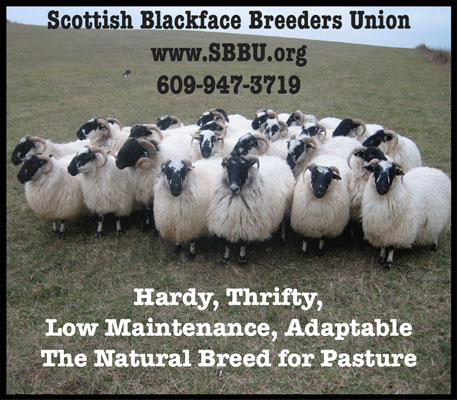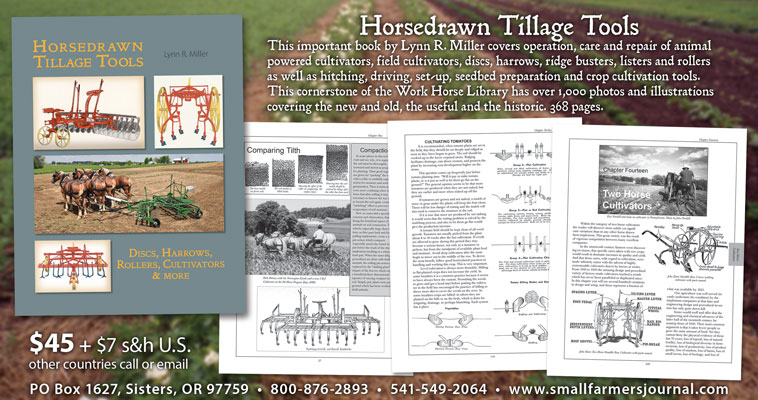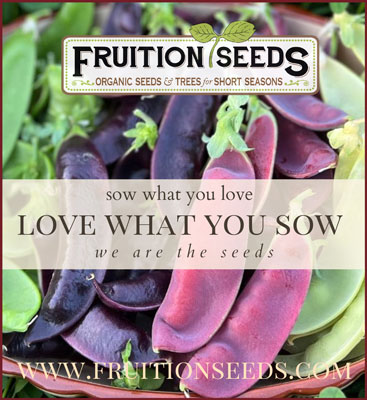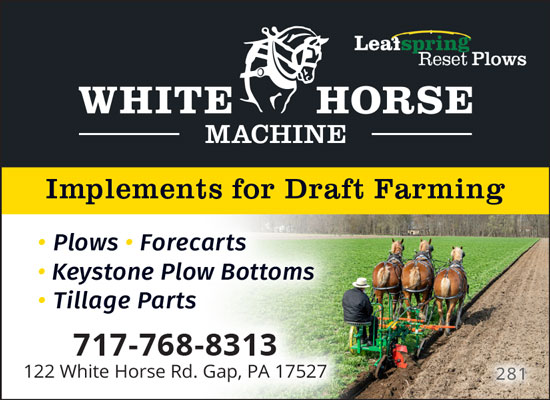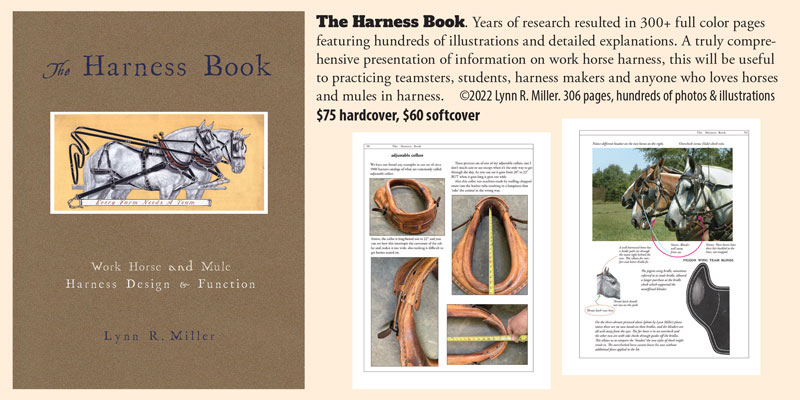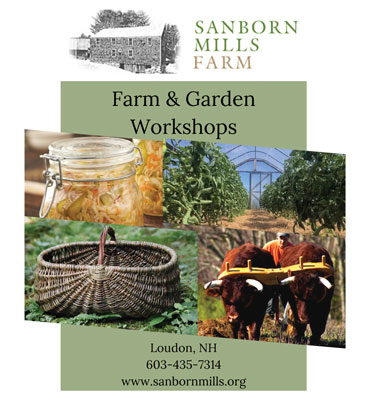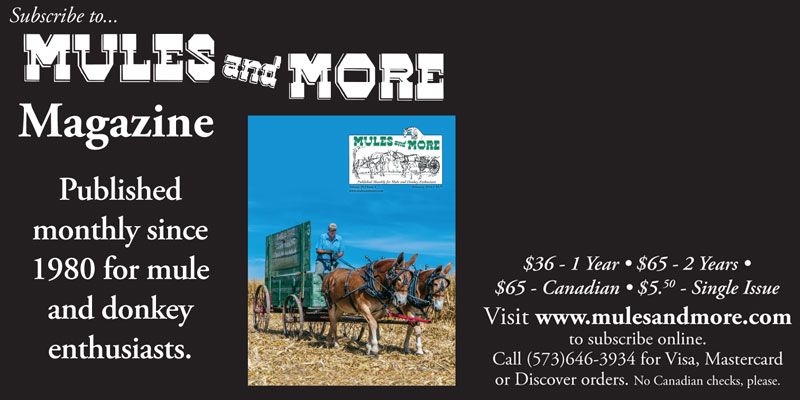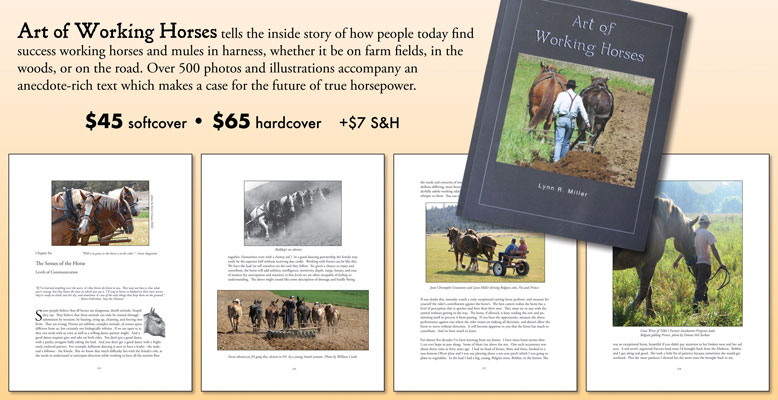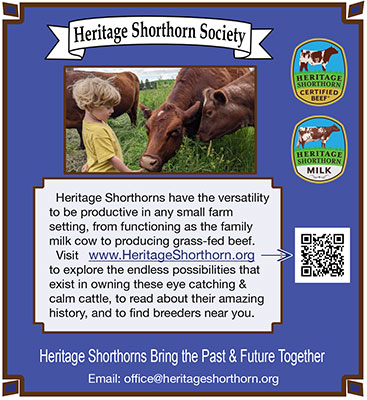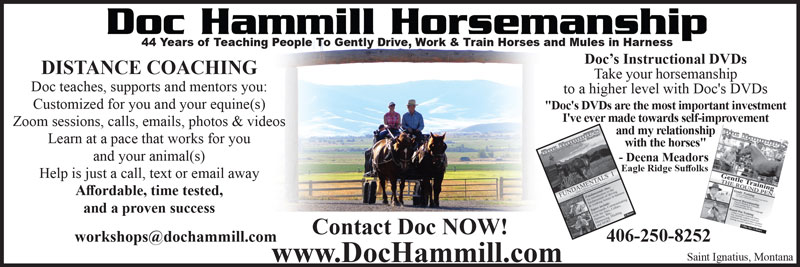MONDAY
April 15, 2024
Ground Driven PTOs
One of the ways tractors both gained and maintained their appeal is from the wider range of machinery they can power with the PTOs they carry. This definitely gave them the advantage over draft power. But is it going to stay that way? It may not have to be on a small farm. During the horsepower road trip Khoke and I went on a couple years ago, we got to see some examples from folks who knew which side of the fence they were on. We saw a number of machines that were reworked and reinvented to make them run off the power source of their choice, namely horsepower.
TUESDAY
April 16, 2024
Headlight Grape
One of the things long desired by Southern fruit growers is a good table grape, sufficiently resistant to leaf and fruit diseases to endure the climatic conditions of their section. Many varieties have been brought forward from time to time; but of the older sorts especially adapted to table use not one, either foreign or native, has yet proved successful over any large area. One of the most promising recent introductions in this field is the Headlight, which was originated by Prof. T.V. Munson, of Denison, TX, in 1895.
WEDNESDAY
April 17, 2024
John Deere Model HH Spreader
Check the adjustments on your spreader and make sure they are in proper operating condition. Hitch your team to the empty spreader to limber it up and see that it is working properly before loading. If you will turn the beaters over by hand before starting to the field, the spreader will start easier and will prevent throwing out a large bunch of manure when starting.
THURSDAY
April 11, 2024
FRIDAY
April 12, 2024
Cedar Creek Plow Day
As a young boy I told myself that one day I would organize an event here in Tennessee to help the public get a glimpse of what we as horse and mule enthusiasts all over get to experience. Finally, this past October, a young boy’s dream came true as my wife and many friends came together to pull off the 1st Annual Cedar Creek Plow Day. We got to incorporate a lot of different activities using horses and mules at this event. I love new ideas in the direction of old ways and equipment from yesteryear.
Are you getting the SFJ Home & Shop Companion?
The Home & Shop Companion is a free weekly email newsletter. It features stories, handy hints, recipes, news, offers, projects, distractions and other stuff we think you’ll find interesting. The entire series is archived here on the website and is free to all to browse: Home & Shop Companion Archive.
SIGN ME UP FOR THE HOME & SHOP COMPANION!
Explore Small Farmer's Journal: Book Reviews
Basic Blacksmithing Techniques
Illustrated guide to basic blacksmithing techniques, an excerpt from Blacksmithing: Basics For The Homestead.
An Introduction To Grasslands Farming
From Dusty Shelves: A World War II era article on grassland farming.
Two New Butchering Volumes
Danforth’s BUTCHERING is an unqualified MASTERPIECE! One which actually gives me hope for the furtherance of human kind and the ripening of good farming everywhere because, in no small part, of this young author’s sensitive comprehension of the modern disconnect with food, feeding ourselves, and farming.
Horse-Drawn Vehicle books from the Carriage Museum of America
The presence of springs on a horse-drawn carriage seems to be of little importance when judged by purely essential criteria. They are not needed to start or stop the vehicle. The horse provides motive power and brakes will stop the carriage when necessary. A carriage without springs could still function, as springs do not serve any absolutely necessary task. They do not light the way at night like lanterns do, or keep occupants dry in a rainstorm like a top. But riding in a carriage minus springs would be most uncomfortable, especially over cobblestone streets or on a country lane, or on a long journey.
Starting Your Farm: Chapter 5
You might think that your new farm is fenced all wrong, or that a certain tree is in the wrong place, or that a wet area would be better drained, or that this gully would make a good pond site, or that a depression in the road should be filled, or that the old sheds should all come down right away. Well maybe you’re right on all counts. But maybe, you’re wrong.
Fibershed: a book review
As I began Burgess’ book, I started off with a few doubts. Despite the fact that I am an avid knitter and sewist with a penchant for natural fibers, I was still a little apprehensive about the book’s ideologies mostly because of cost. How could it be possible for the average person to truly curate a wardrobe of practical clothing essentials sourced from American and local farms without breaking the bank? How does fashion factor into my work as a farmer? I suppose the same concern came about when the local and organic food movement took off – yet here we are, with an increased demand and interest in supporting small-scale neighbor farmers growing produce in rural parts of the country with more affordable options offered through reduced cost CSA shares and agricultural non-profit programs. In my little sliver of the world (the hilltowns of western Massachusetts) it’s actually possible to source most of your food from area farms. I grow food, my neighbors grow food and I buy food grown by a farm less than 10 miles a way. I can’t say the same thing about clothing, however.
The Wheel Hoe: A Tool For Shallow Tillage
When we bought this little farm I soon realized I needed a wheel hoe. The size of the horse and tractor dictated space wasting wide rows in crop production and, to some degree, so does my two wheeled tractor.
First Time Hitching
More from Lynn R. Miller’s highly anticipated Second Edition of “Training Workhorses / Training Teamsters.” Today’s excerpt, “First Time Hitching,” is from Chapter 12, “Follow Through to Finish.”
Rotation As A Means Of Blight Control
Every farmer knows that when a crop is grown on the same field year after year, it becomes inferior in quality and the yield steadily diminishes.
Book Review: Once Upon a Farm
The book depicts the rural material culture of his era through the use of lush, detailed illustrations. The pages are dominated by beautiful watercolors reminiscent of Carl Larson. Each scene centers on one aspect of rural life. Details about the scene are related with uncluttered pen and inks. These are all tied together with Artley’s narrative that is neither sugar coated nor sour. While the author describes his childhood as happy and stable – and clearly enjoyed his early years – there were tasks that he found distasteful. It is a story told through the eyes of a boy growing-up; refreshingly honest and personal. The result is a balanced description portraying life before rural electrification as both trying and rewarding, hard and pleasant.
Farmer Pirates & Dancing Cows
From humor-filled stories of a life of farming to incisive examinations of food safety, from magical moments of the re-enchantment of agriculture to the benches we would use for the sharpening of our tools, Farmer Pirates & Dancing Cows offers a full meal of thought and reflection.
Aboard the Planetary Spaceship
SFJ Spring 2016 Preview: Edward O. Wilson’s new book, Half-Earth: Our Planet’s Fight for Life, offers a plan for the problem of species extinction: the dominant species, man, must hold itself back, must relinquish half the earth’s surface to those endangered. It is a challenging and on the face of it improbable thought, expressed in a terse style. But his phrases are packed because the hour is late.
Fedco Trees & Plants for Spring Planting
Deep in the cultural trenches and personal histories within small farming is the oft shared love of seed catalog mining during fall and winter. We might say it is all about the enthusiasms that come with planning another year’s growing but I know it is also about a tangible immersion in the practical literature of planting choices. As many of you know already, with Fedco Seeds of Maine we have catalogs which are educational, testimonial, encouraging and genuinely bracing. And equally important we have all of that in a form that can and should be trusted and preserved. This is ‘our’ sort of seed company. Let’s go further ‘out on a proverbial limb’ and say their catalogs are our sort of reading material.
19th Century Wisconsin Watercolorist
Wisconsin in Watercolor: The Life and Legend of Folk Artist Paul Seifert, by Joe Kapler, is a superb 2018 art book from the State Historical Society of Wisconsin. The extensive spread of the fascinating and beautiful Seifert paintings would be reason enough for a lover of art to search out this volume. Add in the wonderfully researched and written story of this illusive gentleman and his life’s work and you’ve a double treasure.
Preventing Deer Damage
Juhre begins with an appraisal of deer, both mule deer and white tail. If you’re going to outwit them, he says, you’ve got to know them: their feeding habits, their preferences, how high they can jump, how small an opening they can squeeze under… They are, he says, creatures of habit. So if you don’t want them in your garden, you need to set those boundaries early in the game. Once they’re used to snacking on the gladioli it’s hard to change their ways.
Starting Your Farm: Chapter 4
Assuming that you’ve found a farm you want to buy, next you’ll need to determine if you can buy it. If you have sold your property, and/or saved your money, and have the means to buy the farm you are sitting pretty. If you do not have the full price of a considered farm, in cash or any other form, you will likely have to look for financing.
The R.H. Factor: Radical Homemakers on Real Homesteads
In the 2010 book Radical Homemakers, author Shannon Hayes devotes several chapters to the “consumerization” of American life. While many books have been written about this subject, few go as deep as Hayes does, to question the assumptions that are often made about just what constitutes economic well-being. In short, she shows that “more” isn’t always “better,” and that sometimes what seems “cheap” is actually very expensive if it comes with costs to your time, energy, health, relationships, environment, or conscience.
Brown Dwarf and Other Failed Stars
What happens to this young farmer dropped into a spy thriller without a parachute can’t help but come as a shining surprise. In Miller’s world Nature seems almost to relish its potential to thwart human misdeeds, solve man-made problems and meet human needs — as if human greed and autocratic control were minor failings easily forgiven, as if the whole planet still deserved a many-tongued voice and a diplopod dance to a vast harmonic measure. This is a dark comedy to brighten the night sky, a novel as purgative, a bracing and serious ride.
Raising Animals for Fiber
Have you been staring longingly at those wide eyed alpacas you see out to pasture on your way to work? Or maybe you’ve been mentioning to friends that you would love to have a couple sheep whose wool you could use in your knitting, crocheting, or weaving. If these thoughts have crossed your mind, you are in luck as author and fiber farmer Chris McLaughlin’s new book Raising Animals for Fiber gives an informed overview of owning your own fiber flock.
Ox Whispers
For nigh on 20 years Rob Collins has been an ox teamster. He has also been a high school social studies teacher and a farming instructor at Tillers International. In his capacities with the Midwest Ox Drovers Association he began recording conversations with Ox Teamsters. He then bravely and intelligently compiled these, verbatim, into an album of tremendous effectiveness and value. I say album because, though in printed book form, it has not been ‘academized nor homogenized’ for market. It’s kind of like grandma’s scrapbook of recipes. It is a string of transcriptions which makes it all the more valuable – as it offers a superbly authentic and useful ‘jump start’ to any who might be inclined.
Lynn Miller’s New Book: Art of Working Horses
Art of Working Horses, by Lynn R. Miller, follows on the heels of his other eight Work Horse Library titles. This book tells the inside story of how people today find success working horses and mules in harness, whether it be on farm fields, in the woods, or on the road. Over 500 photos and illustrations accompany an anecdote-rich text which makes a case for the future of true horsepower.
Book Reviews
Lynn briefly reviews several books, including Joe De Yong, A Life in the West by William Reynolds; Storey’s Guide to Raising Beef Cattle 4th Edition by Heather Smith Thomas; and the Farm Collector Show Directory.
The Thresher
Mr. Schadel rumbled up with the grain wagon, sacks flung over the box edge and flapping. His two boys balanced their pitchforks against the sway of the wagon. After that Mr. Dunkel came, slow with his oxen; with him Mr. Marchen with Snoose and the two older brothers, Jack and Bill, in a wide-tired wagon. Behind them drove Mr. Nussbaum and his boys, proud of their sorrels, and sometimes a hired hand – a small circle of neighbors then who gathered to set the machine and stake down the power. Uncle Herm giddapped the team and pulled the separator between the stacks.
Driving Fence Posts By Hand
Where the soil is soft, loose, and free from stone, posts may be driven more easily and firmly than if set in holes dug for the purpose.
McCormick-Deering No. 7 Mower Manual in English & French
Instructions for Setting Up and Operating the McCORMICK-DEERING No. 7 VERTICAL LIFT TWO-HORSE MOWERS — Instructions pour le Montage et le Fonctionnement des FAUCHEUSES A DEUX CHEVAUX McCORMICK-DEERING No. 7 À RELEVAGE VERTICAL
An Introduction To Cob
Mixed with sand, water, and straw, a clayey-subsoil will dry into a very hard and durable material; indeed, it was the first, natural “concrete”. In the Americas, we call it “adobe”, which is originally from the Arabic “al-toba”, meaning “the brick.” Invading Moors brought the word to Spain from North Africa, where an ancient mud building tradition continues today.
Species-rich grassland: a review
Until now, I cannot remember any instance when I found a deep-seeded scientific tome on a tight and narrow subject to be anything but a chore to read. For me, Dr. Vanselow’s Species-rich grassland is a wandering wondering thrill to read, to hold and to peruse, not so much for traditional definitions, narrative and accessibility to information, but because it spills out in a thousand directions with its connections to so many aspects of biological health and human existence in a natural world.
Wheelwrighting: A Modern Introduction
Finally, here it is. The definitive, easy to use, book on Wheelwrighting. This 380 page text is sure to get several hundred North American wheelwrights and wannabe wheelwrights downright goosebumpy. 230 photos and 147 drawings pack this spiral bound puppy with a hefty information punch. It’s all here and written from the perspective of doing the work today. The photos do an excellent job of illustrating procedure and the drawings clearly show equipment. This book includes farm shop equipment and procedural innovations.
Basic Welding for Farm and Ranch
Hands-on human-scale farming will frequently put you in need of a way to repair implements and equipment, including gates, hinges, hangers and such. Success with your operation may well hinge on your willingness and ability to do most of these jobs yourself. Fifty+ years ago, when I got started farming, I was immediately intimidated by the cautions and precautions implicit with welding, either oxy or stick (arc). My first sense was that this process was not for the beginner or novice. I got over my trepidations. That was a long time ago. Since then innovations in welding technologies have come a very long way, adding to the hazards, and complexity, tenfold.
Sneak Peek: Brown Dwarf
Read a preview of Lynn R. Miller’s new novel, Brown Dwarf.
A Short History of the Horse-Drawn Mower
Book Excerpt: The enclosed gear, late model John Deere, Case, Oliver, David Bradley, and McCormick Deering International mowers I (we) are so fond of had a zenith of popular manufacture and use that lasted just short of 25 years. Millions of farmers with millions of mowers, built to have a serviceable life of 100 plus years, all pushed into the fence rows. I say, it was far too short of a period.
Sneak Peek 2: Brown Dwarf
Read another preview of Lynn R. Miller’s new novel, Brown Dwarf.
Honoring Our Teachers
I believe that there exist many great practicing teachers, some of who deliberately set out to become one and others who may have never graduated from college but are none-the-less excellent and capable teachers. I would hazard a guess that many readers of Small Farmer’s Journal know more than one teacher who falls within this latter category. My grandfather, and artist and author Eric Sloane, were two such teachers.
Art of Working Horses – Another Review
One could loosely say this is a “how-to” book but it is more of an “existential” how-to: how to get yourself into a way of thinking about the world of working horses. Maybe we need to explain what a working horse is. A working horse is one, in harness, given to a specific task. So, in that context, the book illustrates the many ways Miller has worked with his equine partners over the years – helping them understand what he wants them to do, as both work together to create relationships that help achieve desired goals.
Spanning the Ditch to the Past
Reynolds’ book offers a treasure-trove of artwork, photos and letters that show how Joe’s friendly contacts grew into an artistic and historical network. As with his entree to Charles Russell, Joe De Yong would introduce himself in an illustrated letter, and engage the stranger with kindred interests. It was an easygoing, direct and generous approach, offering peeks behind-the-scenes into his workshop, for those who might need or want what he had to offer. Joe De Yong quickly became an inveterate and skilled letter-writer, and his letters were a preferred method because of his deafness, where he could unfold an expert understanding, aided by detailed notes and labeled drawings.
Plowing with the Single Horse
All other aspects being equal, the primary difference in plowing, comfortably, with a single horse is that the animal walks on unplowed ground immediately adjacent to the previous furrow, rather than in the furrow. This will cause the point of draft at the shoulder to be somewhat higher and will dictate hitching longer and/or higher than with the animal walking down 5 to 8 inches lower in the furrow.
One Seed to Another – an excerpt
Coming to more recent times, we might visit a pair of small farmers to whom we owe much. Luther Burbank (1849-1926) and George Washington Carver (1864-1943), were both known for their practical plant and crop innovations. Both have been viewed with skepticism by agricultural academics, dismissed as scientific amateurs since neither kept meticulous notes or conducted formal experiments. Both were too busy garnering practical results. Perhaps their backgrounds will suggest why.
Haying With Horses
If the reader is considering the construction of a barn we encourage you to give more than passing thought to allowing the structure of the gable to be open enough to accommodate the hanging of a trolley track. It is difficult or impossible to retrofit a truss-built barn, which may have many supports crisscrossing the inside gable, to receive hay jags. At least allowing for the option in a new construction design will leave the option for loose hay systems in the future.
How to Retrofit a Fireplace with a Woodstove
Because the venting requirements for a wood stove are different than for a fireplace you need to retrofit a stainless steel chimney liner. A liner provides the draft necessary to ensure that the stove will operate safely and efficiently.
Art of Working Horses – A Review
Over 40 years Lynn Miller has written a whole library of valuable and indispensable books about the craft of working horses. He has helped beginners acquire the basics of harnessing and working around horses, and has led those further along to focus on the specific demands of plowing, mowing, haying and related subjects. But, in a fitting culmination, his latest book, The Art of Working Horses, raises its sights and openly ponders secrets at the heart of the work that may over time elevate it to an art.
Late Migrations
Late Migrations: A Natural History of Love and Loss is a very new and vibrantly important book by Margaret Renkl, a weekly contributor to the New York Times from her home in Nashville, Tennessee. Looking for a book that will realign your soul and refresh your observational senses? Here ‘tis. 219 pages of tiny, sweet, sad and illuminating stories, each spinning in place and pointing within and without to natural universe and universality. These stories, some a paragraph long, some a page, a few at two pages, are air-filled word pastries that effortlessly combine surgical sadness, giddy memory, and astounding poetry of observation.
Work Horse Handbook
Horses are honest creatures. And, what I mean by honest is that a horse is almost always true to his motivations, his needs, his perceptions: if he wants to eat, if he needs water, if he perceives danger. He is incapable of temporarily setting aside or subverting his motivations to get to some distant goal. This is often mistaken as evidence for a lack of intelligence, a conclusion which says more of human nature than equine smarts. What it means for the horse is that he is almost never lazy, sneaky or deceptive. It is simply not in his nature.
Timing the Bounce: Resilient Agriculture Meets Climate Change
In her new book, Resilient Agriculture: Cultivating Food Systems for a Changing Climate, Laura Lengnick assumes a dispassionate, businesslike tone and sets about exploring the farming strategies of twenty-seven award-winning farmers in six regions of the continental United States. Her approach gets well past denial and business-as-usual, to see what can be done, which strategies are being tried, and how well they are working.
Heartland: A Memoir of Working Hard and Being Broke in the Richest Country on Earth
In this era when everyone seems focused on the growth of our cities we know that our readership is still heartily invested in our rural landscape. The people Smarsh writes about are our neighbors, and maybe even ourselves. Heartland is touted as a memoir but it is a life study, an ethnography if you will, of farm-based families that struggle to get by.
Stories of Ranch Life
Throughout Thomas’ stories the reader will feel the importance of the human relationship to the land and animals, but also the value of family. “Lynn and I chose ranching because we wanted to raise cattle and horses, but soon discovered that a ranch is also the best place to raise children. Some of our kid’s first memories are of feeding cows. They went along with us as babies because mama had to drive the jeep.”
An Introduction To Farm Woodlands
The farm woodland is that portion of the farm which either never was cleared for tillage or pasture, or was later given back to woods growth. Thus it occupies land that never was considered suitable, or later proved unsuitable, for farm enterprises.
The Hitches for Draught Horses – New Guidebook from Schaff mat Päerd
Regular readers of this journal will be well familiar with the amazing work of Paul Schmit and Albano Moscardo of Schaff mat Päerd in Europe. Their in-depth articles on new continental innovations in animal-drawn technologies have set a very high bar for future inquiries into the discipline. This handsome and eminently practical addition to their Guidebook series covers hitches and hitching of both European and North American types. In addition to the directly practical nature of the information, there is here a subtle and intelligent comparison of two different cultural approaches to the working of horses.
Butchering Chickens
Some years back I had the pleasure of reviewing Adam Danforth’s outstanding and astounding volumes on butchering meats. Those titles won him the James Beard Award among others. His newest title, Butchering Chickens, follows in the very same astute footsteps. This attractive, well organized handy 175 page book, subtitled A Guide to Human Small-Scale Processing, is published by Storey.
One Seed to Another
One Seed to Another is staggering and bracing in its truths and relevance. This is straight talk from a man whose every breath is poetry and whose heartbeat is directly plugged into farming as right livelihood.




